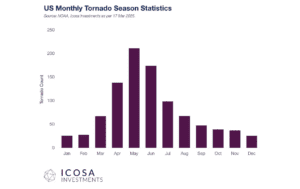What is a total annual premium?
What is a total annual premium?
Definition: The total amount of premium paid annually is called the annualized premium. Description: Any insurance policy comes up with many premium payment options.
Is it better to pay car insurance monthly or yearly?
Paying your insurance premiums annually is almost always the least expensive option. Many companies give you a discount for paying in full because it costs more for the insurance company if a policyholder pays their premiums monthly since that requires manual processing each month to keep the policy active. Feb 15, 2017
Should you pay car insurance all at once?
Typically, you’ll need to renew your plan every six to 12 months. However, you don’t usually need to pay for your entire policy all at once. For instance, you can pay in two installments (paying half each time) or make monthly payments with Nationwide.
Why is monthly car insurance more expensive?
And, like most loans, those repayments come with added interest, which makes paying monthly (a lot) more expensive. It also means your car insurance is treated like a full annual policy in other ways – like cancelling. And it means that, like any other time you take out credit, you’ll have to go through a credit check.
How can I lower my car insurance rates?
Follow our other top tips to drive the cost down even further. Limit your mileage. … Pay annually. … Improve security. … Increase your voluntary excess. … Build up your no claims bonus discount. … Only pay for what you need. … See if it’s cheaper to buy add-ons as separate products. … Consider your cover type. More items… • Oct 4, 2021
Do you have to pay car insurance every year?
Most major auto insurance companies provide coverage for six-month policy terms. This means you’ll pay twice a year, at the beginning of each new term. This allows for easy changes to the policy on the policyholder’s end and also allows the carrier to raise premiums twice a year. Mar 29, 2020
Should car insurance go down each year?
While most of us think of 25 as the magic number for car insurance rates, the truth is that as long as a young driver keeps a clean record, most companies will drop rates a little bit every year before then. Jun 15, 2021
Is Pip required in New York?
New York PIP coverage is a mandatory part of your auto insurance. Minimum PIP covers the insured for up to $50,000 for injuries incurred in a single accident. You can purchase more than the $50K minimum PIP coverage if you wish. Oct 22, 2021
Is NY a no fault state?
New York is a “no-fault” insurance state, which means that insureds are generally reimbursed by their insurance company for damages regardless of who was responsible for causing the accident. Insureds can be reimbursed for medical costs and other losses that might surface after the accident.
What kind of car insurance do you need in New York State?
liability coverage Mandated New York Auto Insurance Coverage The minimum amount of liability coverage you’ll need: $10,000 for property damage for a single accident. $25,000 for bodily injury and $50,000 for death for a person involved in an accident. $50,000 for bodily injury and $100,000 for death for two or more people in an accident.
When did New York become a no-fault state?
In the 1970’s New York’s automobile No-Fault Law was enacted to ensure that insurance companies would pay for legitimate crash related medical expenses, lost earnings and incidental costs, regardless of who was at fault in a crash.
Is New York a no-fault state divorce?
Since 2010, New York has been a “no-fault” divorce state–the last state in the country to embrace this type of divorce. A no-fault divorce is one where a court may dissolve the marital union without requiring one spouse to prove that the other did something wrong. Jun 20, 2021
When did Ny become no-fault?
The Comprehensive Motor Vehicle Insurance Reparations Act, more commonly known as the New York No-Fault Law, became effective on February 1, 1974. The law was enacted to provide prompt payment of health related expenses and wage loss of those parties injured as a result of an auto accident.
What is the maximum PIP coverage in NY?
No-Fault, also called Personal Injury Protection (PIP), is designed to pay promptly, regardless of who is at fault or whether there was any negligence, for economic losses (meaning medical/health expenses, lost earnings, and certain other reasonable and necessary expenses related to injuries sustained), up to $50,000 …
What is additional PIP coverage in NY?
Insurance companies will offer Additional Personal Injury Protection (APIP) in increments of $50,000. So with the basic personal injury protection (PIP) of $50,000, that’s part of your standard auto insurance coverage, the most basic APIP add-on would increase your coverage by $50,000 to a total of $100,000. Sep 24, 2021




